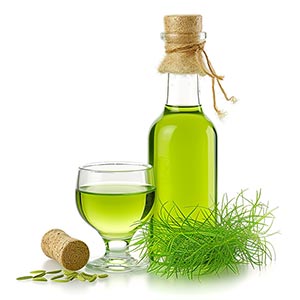Absinthe, often characterized by its green hue and complex flavor, has a rich history dating back to the 18th century. Originally developed as a medicinal elixir, it gained popularity as an alcoholic drink in France in the late 19th and early 20th centuries. In perfumery, Absinthe is used for its distinctive aroma, reminiscent of anise and herbs. Its intense scent profile brings a bold and unconventional twist to fragrances, often imbuing them with a mysterious and slightly intoxicating quality. The use of Absinthe in fragrances evokes a sense of historical allure and bohemian spirit, reminiscent of the artistic and literary circles where it was once a staple. Its inclusion in modern perfumes although rare it continues this legacy, offering a deep and complex note that complements a variety of compositions.
Natural or Synthetic?
The exact extraction process of Absinthe for use in perfumery is not well-documented, making it difficult to ascertain whether a natural or synthetic form is predominantly used. If extracted, it would likely involve distillation of the botanical ingredients that compose traditional Absinthe liquor, such as wormwood, anise, and fennel. However, due to the lack of specific information, the exact method remains speculative.
Fragrance Families Absinthe Most Commonly Found In
Show fragrances that contain Absinthe as a note


